Geology Reference
In-Depth Information
J
Flood plains
Bed-load
I
J
sub-section
I
Depth Facies
Grain-size
C
SfSmS
cS
Gr
P
Depth Facies
Grain-size
C
SfSmS
cS
Gr
P
-220 m
Pr
St
St
C-Gt
Pr
C
-
Gt
Paleosols
C
-
Gt
Pr
Rooted sands
and calcretized
conglomerates
-380 m
-225 m
Sr
Pr
Fluvial-delta
deposits
C
-
Gt
St
Fluvial
Fl
Cross-bedded
coarse sands
Laminated
fine sands
Stm
St
C-Gt
-385 m
Soft-deformed
heterolithics
-230 m
Fm
Fig. 8.13
Fluvial-delta facies succession from the upper part of the
Dekese core-section (Units D2 and D3; Fig.
8.8b
). Sub-section I: soft-
deformed mudstones (Fm facies) and coarse sandstones with compound
cross-stratifications (Stm, St and Sr facies). Sub-section J: mudstones and
paleosols (Pr facies) interbedded with calcretized conglomerates (C-Gt
facies), indicating ephemeral fluvial and arid conditions
regular, alternations of coarse sandstones with shales (sub-
Unit M3b), and then 76 m thick claystones (sub-Unit M3a).
In a similar manner, in the Gilson section, the Unit G3
includes in the lower part relatively thick (44 m) shales
with intercalated beds of sandstones (sub-Unit G3b),
overlain by 117 m thick alternations of sandstones with
mudstones (sub-Unit G3a). All these sequences correlate
with a (northward) prograding delta front in the Dekese
section (Unit D3; Fig.
8.14
). Here, an 80 m thick regressive
sequence includes low-stand heterolithics and soft-sediment
deformed red mudstones sharply overlain by upward-
coarsening front bars, and terminates at the top with a 5 m
thick unit of paleosols, which correlates with the hardpan
separating the Loia and Bokungu Groups in the Samba
section (Fig.
8.8b
).
The Bokungu Group (Unit S3) in the Samba section is
373 m thick, more carbonate-rich, and comprises three main
depositional sequences:
• A lower sequence (sub-Unit S3a) starts with a low-stand
front delta overlain by relatively thick (22 m) fossilifer-
ous carbonated mudstones and marlstones that record the
first main maximum transgression (MFS). This sequence
shallows upward with progressively more mudstones and
intraformational conglomerates (Fig.
8.12
). It ends at
depth
412 m with a surface of emersion represented
by calcretized sandstones (Fig.
8.8b
).
• A middle sequence comprises fining upward planar-
bedded sandstones with carbonate conglomerates, over-
lain by carbonated mudstones and marlstones with
successive front bars (sub-Unit S3b). This sequence is

































































































































































































































































































































































































































































































































Search WWH ::

Custom Search